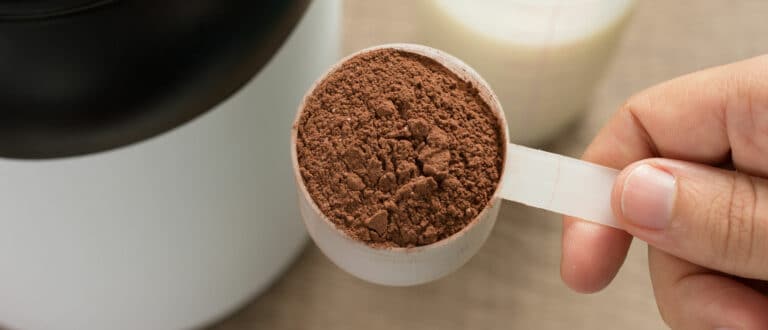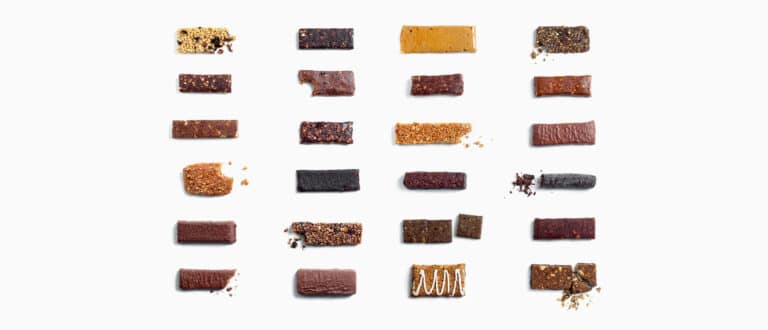These High-Protein Cereals Deliver Nostalgia Without the Sugar
Breakfast might be the most important meal of the day, but if Fruit Loops are on the menu it’s worth a skip. The truth is, most cereal is just dessert masquerading as breakfast. The average bowl of Cap’n Crunch packs 17 grams of sugar and only two grams of protein—meaning it might taste good, but it’s a recipe for a big blood sugar spike (and subsequent energy crash) and won’t keep you satisfied for long. Not all cereal is the enemy, however.
Protein cereal offers more protein (duh) and delivers your favorite childhood flavors with way less sugar. The addition of protein provides a more balanced macronutrient profile, which helps keep blood sugar levels steady, says registered dietitian Jessica Levinson, MS, RDN, CDN. “Choosing a high-protein cereal will also help balance your protein intake throughout the day,” she adds. Our bodies can only process about 20 to 25 grams of protein in one sitting, according to a review published in the Journal of the International Society of Sports Nutrition (1). In other words, prioritizing protein early in the day ensures that you’re getting enough.
Benefits of High-Protein Cereal
Aside from satisfying your cereal cravings, there are plenty of science-backed benefits to packing down more protein. Studies show eating more protein can help:
- Maintain and increase muscle mass (2)
- Boost bone health (3) and reduce the risk of osteoporosis (4)
- Reduce appetite and hunger levels (5)
- Reduce cravings and late-night snacking (5)
- Boost metabolism and burn more fat (6)
- Reduce blood pressure (7)
- Lower LDL (bad) cholesterol (8)
- Maintain and lose weight (9, 6)
- Recover faster (10)
Is High-Protein Cereal Healthy?
Not necessarily. Just like regular cereal, some protein cereals are healthier than others. “Protein cereal can be healthy, especially if it’s made with whole grains and is low in added sugars,” says Levinson. “But many high-protein cereals are made from highly processed forms of protein, which aren’t as ideal as naturally protein-rich foods like nuts and seeds.”
When shopping for a healthy protein cereal, Levinson looks for cereals with at least three grams of fiber per serving (but the more the better). She also sets the cap at seven grams of sugar. Why? Even with the protein to balance out a blood sugar spike, the American Heart Association recommends men consume no more than 38 grams of sugar per day (11).
Added sugar is found in abundance in cereals from Cookie Crisp to Honey Nut Cheerios (say it ain’t so). Sugar stokes inflammation, which is linked to everything from erectile dysfunction to heart disease (12). Added sugar, in particular, is a major contributor to obesity (13). High sugar intake has been linked to anxiety and depression (14). Plus, excessive amounts of sugar can increase cellular aging, making you functionally older (15).
The Best High-Protein Cereals
Ready to upgrade? Here are the best protein cereals that pass Levinson’s test.
References
1. Shoenfeld, B, et al (2018). How Much Protein Can the Body Use in a Single Meal for Muscle-Building? Implications For Daily Protein Distribution.
2. Carbone, J. et al (2019). Dietary Protein and Muscle Mass: Translating Science to Application and Health Benefit.
3. Wallace, T. (2019). Optimizing Dietary Protein for Lifelong Bone Health.
4. Hannan, M. et al (2009). Effect of Dietary Protein on Bone Loss in Elderly Men and Women: The Framingham Osteoporosis Study.
5. Leidy, H. et al (2011). The Effects of Consuming Frequent, Higher Protein Meals on Appetite and Satiety During Weight Loss in Overweight/Obese Men.
6. Moon, J. et al (2020). Clinical Evidence and Mechanisms of High-Protein Diet-Induced Weight Loss.
7. Kuil, W. et al (2010). Dietary Protein and Blood Pressure: A Systematic Review.
8. Appel, L. et al (2005). Effects of Protein, Monounsaturated Fat, and Carbohydrate Intake on Blood Pressure and Serum Lipids.
9. Leidy, H. et al (2015). The Role of Protein in Weight Loss and Maintenance.
10. Cintineo, H. et al (2018). Effects of Protein Supplementation on Performance and Recovery in Resistance and Endurance Training.
11. Lim, M. et al (2021). Animal Protein versus Plant Protein in Supporting Lean Mass and Muscle Strength: A Systematic Review and Meta-Analysis of Randomized Controlled Trials.
12. American Heart Association (2023). How Much Sugar Is Too Much?
13.Ma, X. et al (2022). Excessive Intake of Sugar: An Accomplice of Inflammation.
14. Farque, S. et al (2020). The Dose Makes the Poison: Sugar and Obesity in the United States—A Review.
15. Jacques, A. et al (2019). The Impact of Sugar and Consumption on Stress Driven, Emotional, and Addictive Behaviors.
16. Galie, S. et al (2020). Impact of Nutrition on Telomere Health: Systematic Review of Observational Cohort Studies and Randomized Clinical Trials.














